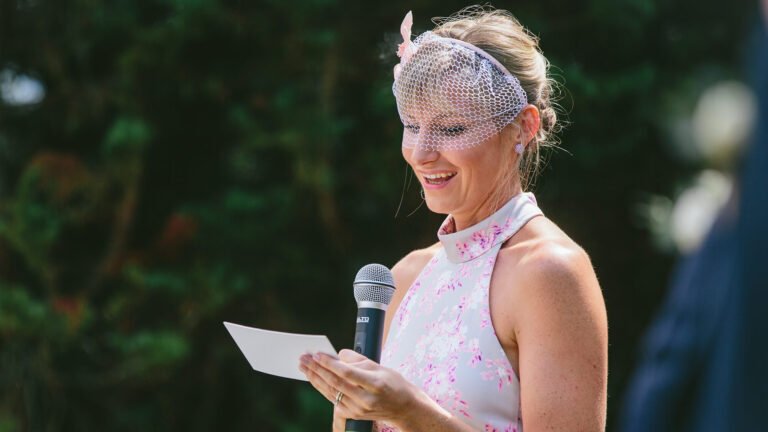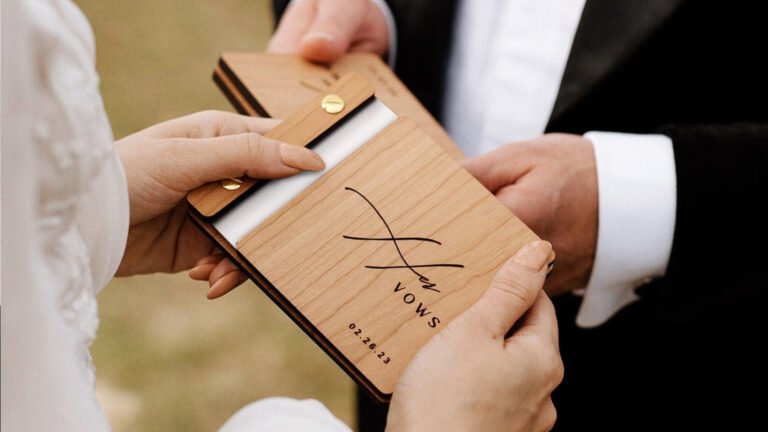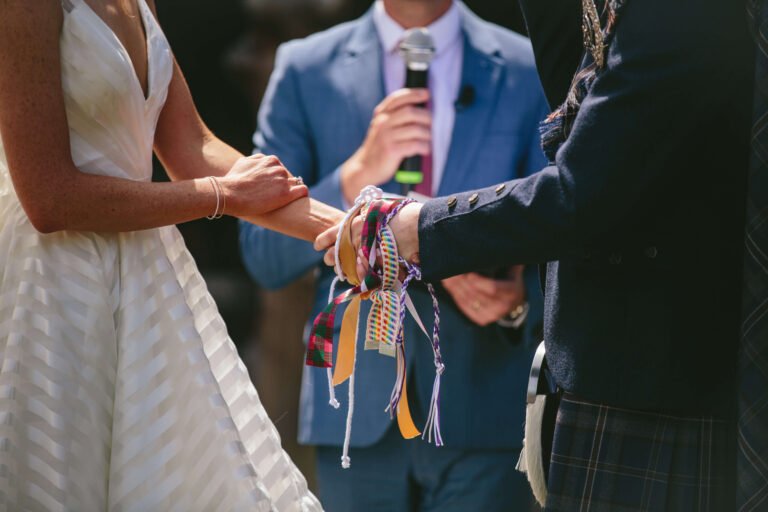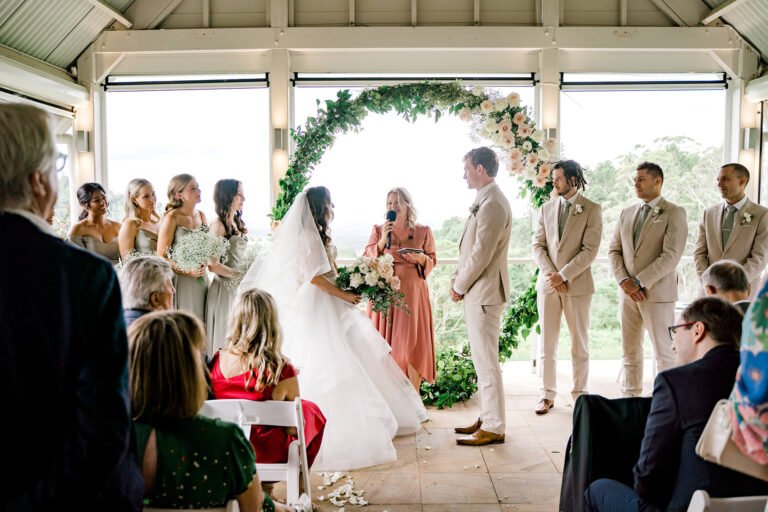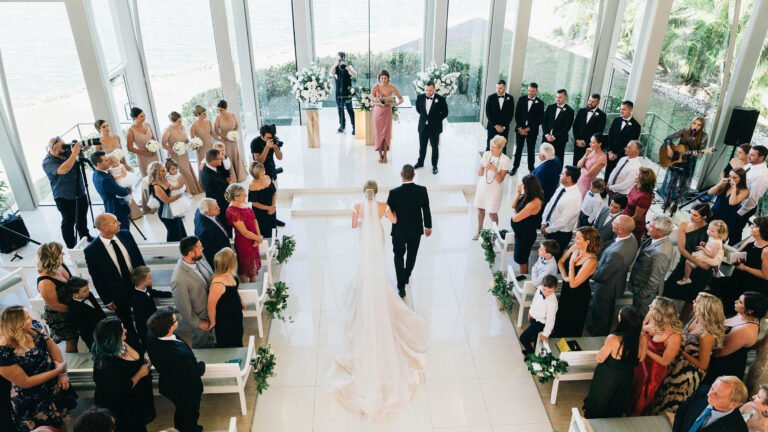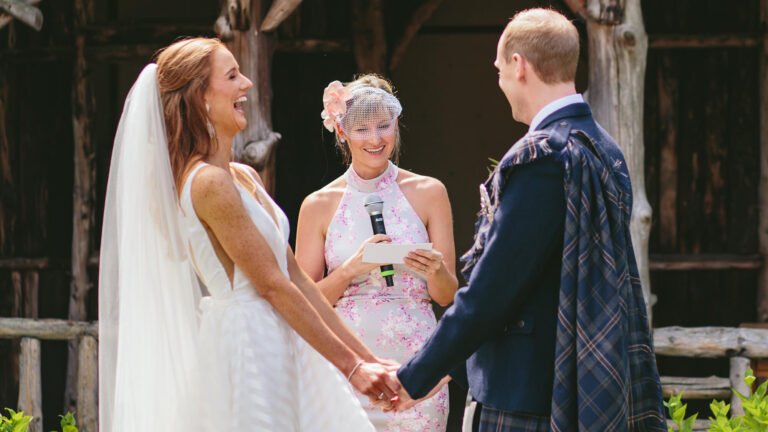Everything You Need to Know About Planning a Wedding Ceremony in South East QLD

Planning a wedding ceremony in Southeast Queensland can be overwhelming, but don’t worry! You’re in good hands. As a wedding videographer, I’ve seen it all. From the most extravagant ceremonies to the most intimate ones, I’ve captured them all on camera, and through my eyes you can watch a full wedding ceremony from incredible venues.
From selecting the ideal time and season to exploring unique local venues and adding your own touches like writing personal vows, we’ve got you covered. Discover the vibrance of the Gold Coast and the pristine nature of the Sunshine Coast as we showcase stunning venues such as the Intercontinental Sanctuary Cove Resort, Rainforest Gardens, and the ever-popular Maleny Manor.
Looking for some real inspiration? You can watch complete wedding ceremony examples I’ve captured from start to finish. You’ll see all of the important moments from the much-anticipated bride’s entrance, the groom’s reaction, the vows, the ring exchange, and of course the kiss.
So let’s dive in.
How Do You Plan a Wedding Ceremony Step by Step?
Planning a wedding ceremony can be a daunting task, but with some guidance and preparation, it can also be a rewarding and memorable experience. The first step is to decide on the type and style of your ceremony, such as traditional, religious, secular, formal, casual, or anything in between. This will affect the choice of your venue, officiant, music, readings, vows, and rituals. You can research online, read books, or consult with your family and friends to get some inspiration and ideas for your ceremony.
The next step is to choose your venue and celebrant, depending on the type and style of your ceremony. Some venues may have restrictions on the size, duration, or decor of your ceremony, so make sure you check with them before booking. Some celebrants may have requirements or preferences for the content and format of your ceremony, so make sure you communicate with them and agree on the details.
The third step is to plan the order and content of your ceremony. A typical wedding ceremony consists of several parts, such as the processional, the welcome, the introduction, the exchange of vows and rings, the pronouncement, the kiss, and the recessional. However, you can customize and personalize your ceremony to reflect your personality and relationship.
You can choose the music, readings, vows, and rituals that suit your taste and theme. You can also write your own vows or ask your officiant to help you craft them. You can also involve your family and friends in your ceremony by asking them to be part of your wedding party, to give readings, to perform music, or to witness your marriage.
The final step is to rehearse and prepare for your ceremony. Before your wedding day, you should rehearse your ceremony with your officiant and wedding party, to make sure everyone knows their roles and cues. You should also prepare the items you need for your ceremony, such as your rings, flowers, candles, or any other props.
You should also check the weather forecast and have a backup plan in case of rain or other unforeseen circumstances. On your wedding day, you should arrive early, relax, and enjoy your special moment with your partner and loved ones.
What is involved in a wedding ceremony?
In Australia, a civil wedding ceremony is conducted by a celebrant who is authorised by the government to perform marriages. The ceremony usually begins with an introduction by the celebrant and a welcome by the celebrant. The celebrant will include the legal requirements of marriage in Australia.
Every couple must follow certain legal requirements to ensure their marriage is recognised under Australian law. Celebrant Liz Pforr, from Yes I Will Marry You, explains:
“During the ceremony, there are legal passages, ‘the Monitum’ that is required to be said by the celebrant and one sentence from each person in the marriage for their legal vows ahead of any personalised vows or special promises the couple may want to say to one another.”
Couples may exchange traditional or personalised vows to suit their preferences. In the ceremony video above you’ll see Elizabeth and Ben say their own, handwritten wedding vows which will give you a glimpse into who they are as a couple and their journey together so far.
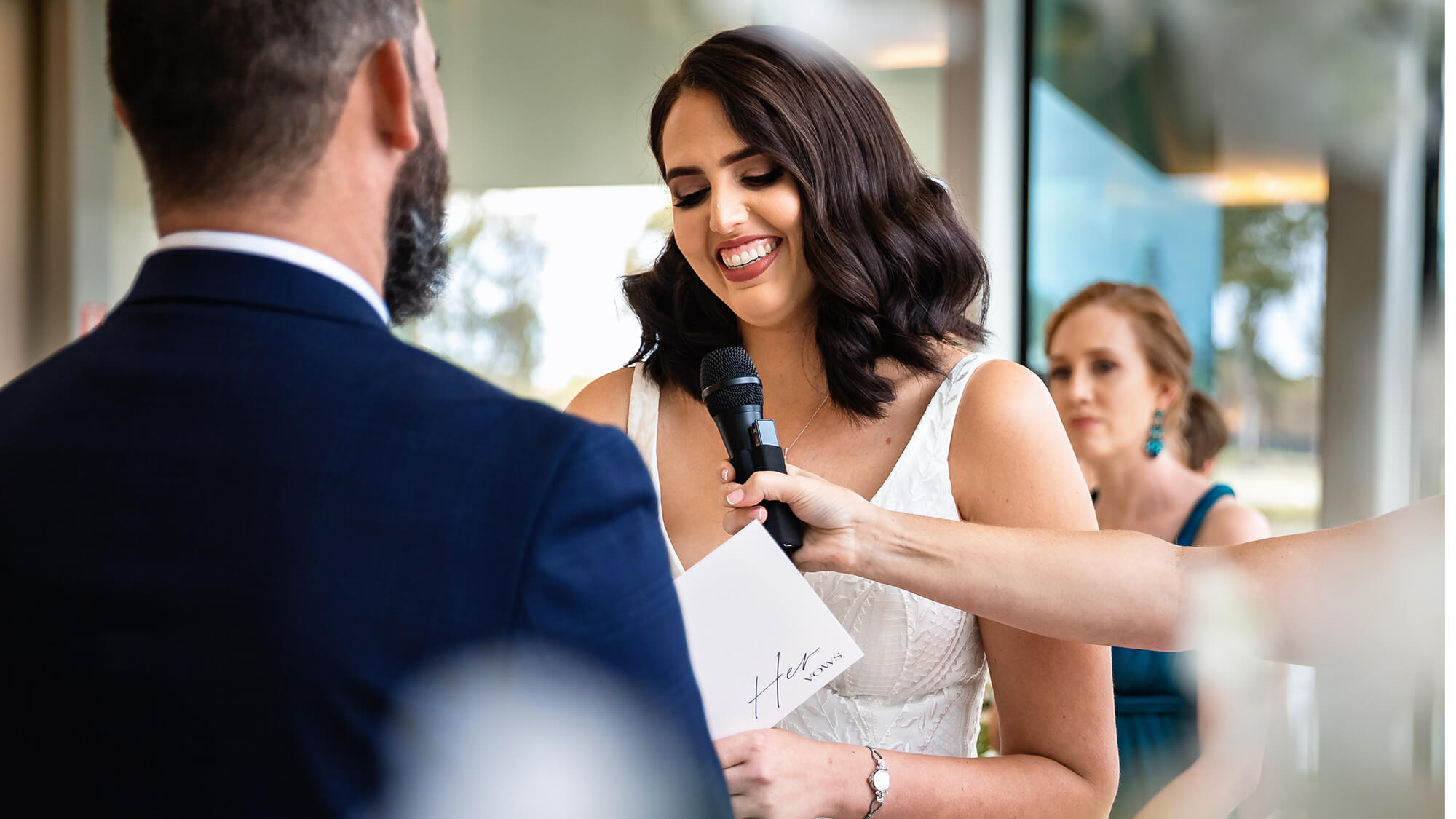
After the vows, the couple traditionally exchange rings which symbolize their commitment to each other.
The celebrant will ask the couple to sign the official marriage documents, as well as any additional documents required by the state or territory.

Witnesses will also be required to sign the documents as Liz clarifies:
“The couple needs to have two witnesses over the age of 18 who will sign the documentation and listen to their vows. Traditionally, they are the best man and maid of honour but these can be anyone special to the couple and it is a great opportunity to involve others in the ceremony. Parents, siblings, or one of the groomsmen, for example.”
The ceremony concludes with the celebrant announcing that the couple is now legally married and inviting them to share a kiss.
Civil wedding ceremonies in Australia are relatively simple and can be customised to suit the couple’s preferences. Using a celebrant allows you to have a personalised ceremony that’s heartfelt and memorable for everyone.
Related Article: 7 Beautiful Examples of Wedding Vows for Her

How long should a wedding ceremony be?
This comes down to personal preference. In the ceremony video above you can see Elizabeth and Ben’s ceremony was just over 30 minutes in length which Gold Coast celebrant Tarnya Bennett thinks is the maximum amount of time for a civil marriage ceremony.
“I keep mine at 30 minutes max including the signing of documents. I find you can hold everyone’s attention and have them fully engaged up to the 20-minute mark and having the couple stand up there for 20 minutes as well is enough for them!”
Celebrant Clarah Luxford agrees that 30 minutes is enough time to fit into a couple’s wedding day schedule saying “I advise my couples to plan for a 5-minute aisle walk which includes the wedding party walking the aisle, then 20 minutes for the ceremony, and 5 minutes to sign the marriage register and walk back down the aisle.”
Venue: Intercontinental Sanctuary Cove Resort
Celebrant: Melissa Price
Photography: Lynn & Justin
What are the benefits of having an outdoor ceremony?
The obvious first benefit is being surrounded by the natural beauty of an outdoor setting. Gardens, beaches, or vineyards often have natural beauty that can provide a stunning backdrop for a wedding ceremony. Couples may choose to take advantage of this scenery to create a memorable and picturesque wedding like Joyce and Luca’s at Rainforest Gardens in Mount Cotton Queensland.
Unique Atmosphere: Outdoor wedding ceremonies often have a unique and relaxed atmosphere that can make the event feel more intimate and personal. The natural surroundings can create a calming and peaceful environment that helps guests feel more connected to the couple and the moment.
More Space: Outdoor settings can often accommodate larger guest lists and offer more space for guests to move around, take photos, and enjoy the celebration. This can be especially helpful for couples who have many family members and friends to invite.
Seasonal Opportunities: Depending on the location and time of year, outdoor wedding ceremonies can take advantage of seasonal opportunities such as blooming flowers and fall foliage, adding to the beauty and uniqueness of the occasion.
It’s important that if you plan on having an outdoor wedding ceremony to have a backup just in case of rain.
Photo: Mario Colli Photography
Celebrant: Venita Manning
Ceremony and Reception: Rainforest Gardens in Mount Cotton, Queensland
What is the best time of the year to have a wedding ceremony in Queensland?
Generally speaking, the most popular time of the year to get married in Queensland is Spring. With the weather starting to warm up, flowers are beginning to bloom and it’s typically the driest time of the year.
But what is the BEST time? Well that largely depends on personal preferences and the specific location within Queensland. However, there are a few factors to consider when choosing a time for your wedding:
- Weather: Queensland generally experiences a subtropical climate with warm temperatures and high humidity. The summer months (December to February) can be quite hot and humid, with occasional rainfall and the possibility of tropical storms. Spring (September to November) and autumn (March to May) offer pleasant temperatures, lower humidity, and less rainfall. These seasons are often favoured for outdoor weddings.
- Seasonal Highlights: Consider the seasonal highlights that Queensland has to offer. For instance, if you’re interested in lush green landscapes and blooming flowers, the spring months would be ideal. If you prefer milder temperatures for outdoor activities or stunning autumn foliage, then autumn would be a good choice.
- Peak Season and Costs: Queensland’s peak tourist season generally occurs during the Australian summer holidays (December to January) and the Easter period. This means that venues and services may be more expensive and harder to secure during these times. If you’re looking to minimize costs or have more flexibility with availability, you might consider choosing a date outside of the peak tourist season.
- Local Events and Festivals: Keep an eye out for any major local events or festivals that may coincide with your desired wedding date. These events can impact accommodation availability, traffic, and overall logistics for your wedding.
Ultimately, it’s important to weigh these factors against your personal preferences and priorities. Consult with your partner, consider the vision you have for your wedding, and take into account the specific location within Queensland to determine the best time for your ceremony.
Venue: Maleny Manor on the Sunshine Coast
Photo: Ben and Hope Photography
When is the best time of day to have a wedding ceremony in Queensland?
The best time of day to have a wedding ceremony in Queensland often depends on personal preferences, weather considerations, and the style of the wedding. However, generally speaking, many couples opt for late afternoon or early evening ceremonies.
This timing allows for beautiful lighting for photographs, avoids the peak heat of the day, and provides a comfortable atmosphere for guests. Additionally, it can allow for a smooth transition into an evening reception. However, if you prefer a morning wedding, that can also be a lovely option, especially if you’re aiming for a brunch or lunch reception.
Here are some example times for wedding ceremonies in Queensland by season:
Spring (September – November):
- Morning: 10:00 AM – 11:00 AM
- Afternoon: 3:00 PM – 4:00 PM
- Evening: 5:00 PM – 6:00 PM
Summer (December – February):
- Morning: 9:00 AM – 10:00 AM (to avoid the peak heat)
- Afternoon: 4:00 PM – 5:00 PM
- Evening: 6:00 PM – 7:00 PM (to catch cooler temperatures)
Autumn (March – May):
- Morning: 10:00 AM – 11:00 AM
- Afternoon: 3:00 PM – 4:00 PM
- Evening: 5:00 PM – 6:00 PM
Winter (June – August):
- Morning: 10:00 AM – 11:00 AM (to allow for warmer temperatures later in the day)
- Afternoon: 2:00 PM – 3:00 PM
- Evening: 4:00 PM – 5:00 PM
These times are just examples and can vary depending on individual preferences, venue availability, and specific weather conditions. It’s advisable to also check the sunset times, especially if you’re planning an outdoor ceremony, as this can affect lighting and the overall ambiance of your wedding.

Is a wedding rehearsal necessary?
Having a wedding rehearsal has obvious benefits like calming pre-wedding jitters, clarifying roles and responsibilities, and ironing out small details, but it’s not a must-have. However, there’s one important factor you may not have thought of: natural lighting.
Natural lighting plays a crucial role, especially for outdoor ceremonies. While the suggested times above are a great starting point, a ceremony rehearsal or a visit to your venue at the exact time of day you plan to get married is highly recommended. This allows you to see how the sun will be positioned and avoid any potential discomfort for you, your partner, or your guests. Imagine saying your vows while squinting into the sun – not ideal! With a little planning, you can ensure both a beautiful ceremony and a comfortable experience for yourselves and your guests.
Here’s how to ensure optimal lighting for your ceremony:
- Schedule a rehearsal or venue visit at the exact time of day: This allows you to see how the sun will be positioned and make adjustments if necessary.
- Communicate with your venue coordinator: They’ll have experience with different ceremony times and can advise on the best positioning for optimal lighting.
- Be flexible: If the sun’s position is unavoidable at your ideal ceremony time, consider alternative locations within the venue or adjust the ceremony time slightly.
By considering these tips, you can ensure your Queensland wedding ceremony is bathed in the perfect light, creating a truly magical moment for you and your loved ones.
